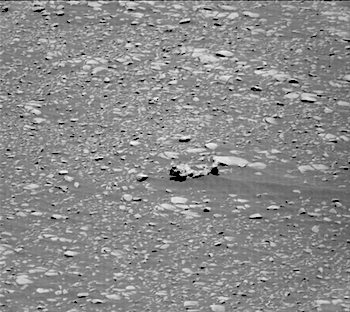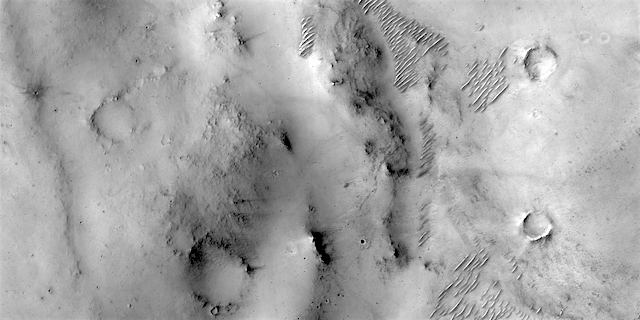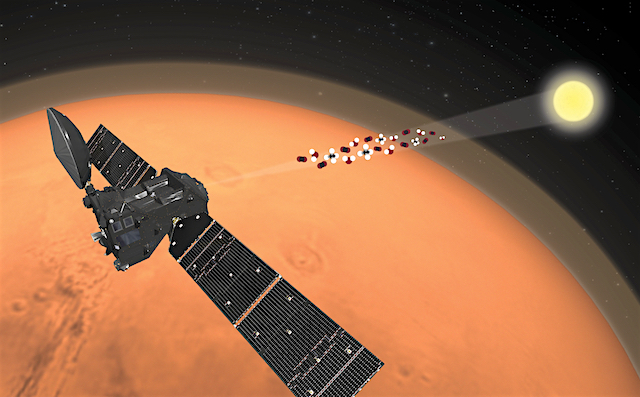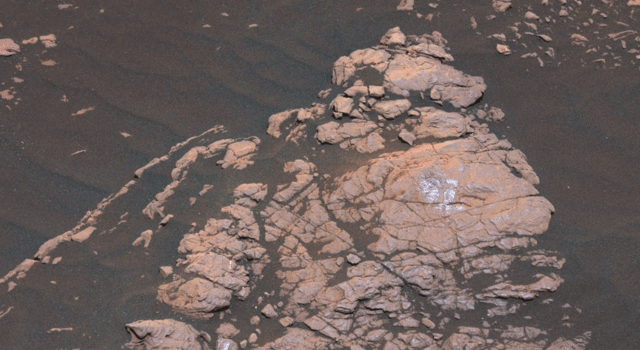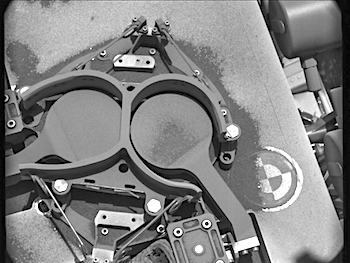 THEMIS Image of the Day, April 12, 2019. Today’s false-color VIS image is located in the plains between Chryse and Acidalia Planitias. Dark blue tones in this false color combination are usually created by basaltic sands.
THEMIS Image of the Day, April 12, 2019. Today’s false-color VIS image is located in the plains between Chryse and Acidalia Planitias. Dark blue tones in this false color combination are usually created by basaltic sands.
There appears to be surface sands in the middle of the image. The “orange” tail behind the crater towards the top of the image is created by wind action. Wind will both erode and deposit fine materials. The wind tail is the downward side of the crater.
These features are termed wind streaks, and they help to understand the direction of wind. Both the wind streak and the surface sands indicate a dusty/sandy region confined to the central part of this image.
The THEMIS VIS camera contains 5 filters. The data from different filters can be combined in multiple ways to create a false color image. These false color images may reveal subtle variations of the surface not easily identified in a single band image.
Explore more THEMIS Images of the Day by geological subject.









